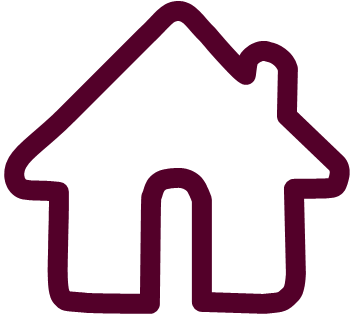































Why Icelandic sheep?
These sheep are the stuff legends are made of. They are a triple purpose breed producing a tender
gourmet meat, a rich delicious milk, and a fabulous quality fleece product. We have found the Icelandic's
to be the perfect sheep for a small farm setting. They are hardy, relatively disease-free (no scrapie or foot
rot), low maintenance, no need for tail docking or castration and they can be pasture lambed. The lambs
grow fast and on hay alone without grain supplementation and are early maturing. They are long-lived,
easy lambers, intelligent, excellent mothers and good milkers. The Icelandic's have wonderful
personalities and are so curious and playful. We just love having them on the farm.
Breeding and lambs!
Icelandic sheep become sexually mature early and the ewe lambs are bred at 7-9 months of age. Many
Icelandic ewes remain productive until age 10 or older. The ram lambs are capable of breeding at about 6
months of age, though some may be ready earlier. These ewes are very seasonal breeders, coming into
estrous as the daylight shortens toward the end of October. They will continue to cycle into early spring.
Most ewes here are bred in November and December.
The gestation period is typically 143-145 days, a little shorter than the average for sheep. The lambs are
small at birth, generally 6-10 pounds, and their narrow heads and fine bone structure makes birthing
easier. They are exceptionally vigorous at birth and are up and trying to nurse in minutes. The mothers
are attentive and often have the first lamb licked off and nursing before the second is born. Twins are
common in this breed and are actually expected after the first lambing. Triplets are not uncommon and
the ewes are, for the most part, capable of raising triplets without assistance. It is not unusual to find
triplets warm and dry, with full bellies, sleeping next to mom with no intervention needed. The lambs
are born with a good covering of very soft "poodle-like" curly fleece and tolerate the elements well. Being
born in spring also means less frigid nights for lambing. The lambs grow rapidly, gaining 1/2 to 1 pound
a day. (ISBONA website)
At around 2 months of age, lambs can be weaned and are able to go to their new homes. Sheep are social
creatures and need to be with other sheep so make sure your lamb has a buddy.
Housing
Our sheep are housed in a large barn with access to a pasture area fenced with electric netted fencing
which works wonderfully to keep the sheep in and the predators out. Sheep should be kept in clean pens
free of dampness, drafts and pests like flies and rodents. They should not be housed in airtight buildings
as they need to have ventilation to stay healthy.
Finding the right bedding material and barn flooring has been a huge challenge for us. We have tried dirt
flooring, gravel flooring, straw and pellet bedding with no success. We finally have come up with a
solution that works great for our sheep and goats. First off, goats and sheep are notorious for wasting hay
when they eat so we let them use the dropped hay for their bedding and then clean the bedding areas
once a week. The bedding areas have wood frames around them which contain the hay from spreading
around the barn creating a big mess. Outside of the bedding areas the rest of the barn is graveled and a
special porous fabric is laid on top of it. It took us several tries to find the exact fabric that would work -
not too thick that the urine couldn't go through and not too thin where it could tear. We had samples of
different fabric sent to us from throughout the country. With the fabric we chose, the urine goes through
the fabric, gravel, and out of the barn which decreases any chance of infection to the ewe's udders which
can be an issue for milking animals. The sheep poop pellets are then swept out of the barn every
morning leaving a clean, dry environment for the sheep to enjoy.
Feeding
Sheep always need fresh water, hay or pasture, and minerals at all times. Icelandic sheep are unique in
the fact that they are so hardy they do not need to be fed any grain. Not even while they are pregnant or
nursing their lambs. This makes them as extremely efficient animal for the farm. They are always excited
to have a treat though!
Health Care
Hooves should be trimmed a couple of times a year. Make sure to check regularly for overgrowth. A
properly trimmed and shaped hoof should resemble those of a lamb's hoof.
Vaccinations for tetanus and types C&D are given annually. Check with your local vet for other
vaccinations recommended for your area.
Worming should be done several times a year. We use Ivomec and Valbazen wormers if we see a sheep
getting thin or feeling under the weather.
Shearing generally occurs twice a year in the spring and the fall. The spring clip is shorter and better for
felting and the fall clip is longer and is used for spinning.
Fiber and Fleece
The Icelandic fleece is dual coated, with a fine soft insulating under layer called thel, and a longer,
coarser moisture resistant outer guard called tog. These fibers can be processed together to create a Lopi
yarn which is unique to Icelandic sheep. The thel is around 20 micrometers in diameter and is used for
garments that touch the skin like fine baby clothes and laceworks. The tog is generally a medium wool
around 27 micrometers in diameter which is good for weaving and items requiring durability like
embroidery yarn or basketry. Icelandic fleece is known for its ease of felting, which makes it sought after
for slippers, boots, hats, vests, jackets and 3-D fiber artists. Their fleece is quite versatile and can be sold
to hand spinners at a premium price, or it can be processed into roving, felting batts, and yarn.
The Icelandic sheep can shed their wool in the spring. The wool break occurs in the late winter in the
rams and later in the spring in the ewes. The ewes are putting energy into their pregnancies and not into
wool growth at that time. The ewes will shed the belly and udder wool first so that shearing is not
necessary prior to lambing. Icelandic fleeces are open and low in lanolin. The weight loss when washed
is significantly less than many other breeds. The average adult yearly fleece total weighs 4-7 lbs.
Breed Description
The Icelandic sheep is one of the world's oldest and purest breeds of sheep. They are a medium sized,
hardy breed brought to Iceland on the boats of the Vikings around 1100 years ago. They have been
isolated on the island since then and to this day are the biggest source of meat for Icelanders. They were
selectively improved by the Vikings over generations until they became a true triple-purpose animal,
providing meat, milk, and fleece.
Icelandic's are a mid-sized breed with ewes averaging 130-160 pounds, and rams averaging 180-220
pounds. Conformation is generally short legged and stocky. The rams have muscular builds with
massive horns and majestic quiet temperaments. The face and legs are free of wool. There are both
horned and polled strains. Due to their large rumens and sparse vegetation in Iceland, the breed is highly
feed efficient. Left unshorn for the winter, the breed is very cold hardy and has a strong, reactive immune
system. On good grass, meat lambs can be slaughtered directly off the pasture at 5-6 months of age.
The most eye-catching aspect of the breed is the variation of colors and patterns. Genetically, Icelandic's
have one of two base colors, either black or moorit (brown). They exhibit 5 pattern combinations: white,
gray, badgerface, mouflon and solid. Individual sheep may also display various shades of these
colors/patterns, ranging from white, cream, light gray, tan, caramel, milk chocolate, silver, dark
chocolate, dark gray, to jet black. A spotting gene adds even more combinations with many recognized
and named patterns of white markings.
The Icelandic sheep were first brought to Canada in 1985 by Stefania Sveinbjarnardottir-Dignum , an
Icelandic woman living in Ontario Canada, on Yeoman Farm. She first imported 12 animals and then, in
1990, another larger group. In both these groups, she carefully sought out the most diversity she could in
colors and patterns from the animals in the Scrapie free area in Iceland. In 1992, after a five year
quarantine period, the sheep were first imported into the USA, by Barbara Webb of Jager Farm in
Massachusetts. The registration of the animals is maintained through the Canadian Livestock Registry
Corporation (CLRC) and is the only registration recognized. - Small Farm Today, March /April 2001.














